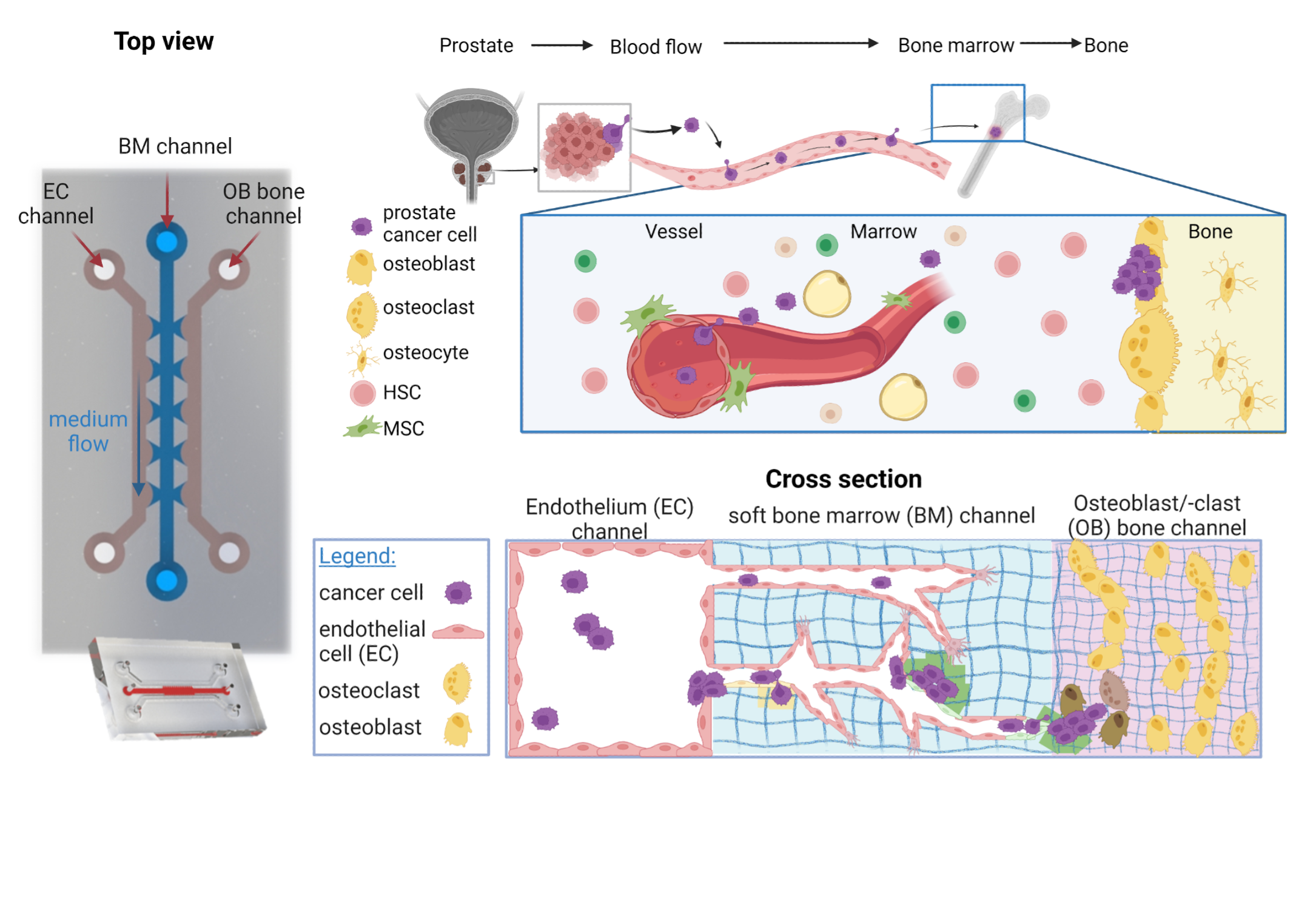Building a “mini-bone” to understand cancer spread in bone
The spread of cancer cells to other organs (metastasis) is the leading cause of cancer death. In 70 to 85% of patients with prostate or breast cancer, the disease has spread to the bone. We do not yet understand how tumor cells from the blood enter the bone marrow reside and then grow into the hard bone, where they have a major effect on both bone-forming and bone-degrading cells, thereby affecting patient's quality of life.
The goal of this project is to develop a “bone metastasis chip, OSCAR” in which we can simulate blood flow (containing tumor cells) through the sequential layers of the bone using a micro-fluid system. We will use available chip designs and fabrication methods to grow the different bone tissue structures (blood vessel, bone marrow and bone) in an anatomically relevant environment. The challenge lies in the application of the micro-fluidic system because the current liquid systems are not suitable for biological micro-applications. Ultimately, with this project, we will build an advanced and tunable bone metastasis chip (OSCAR) system that faithfully mimics the anatomy and physiology of human bone, and in which we can investigate the behaviour of tumor cells during the earliest stages of bone metastasis formation. Importantly, both OSCAR and the newly acquired knowledge have relevance not only for bone metastasis research, but also for application in a broad field of research into metastasis in other tissues and in other forms of cancer.





